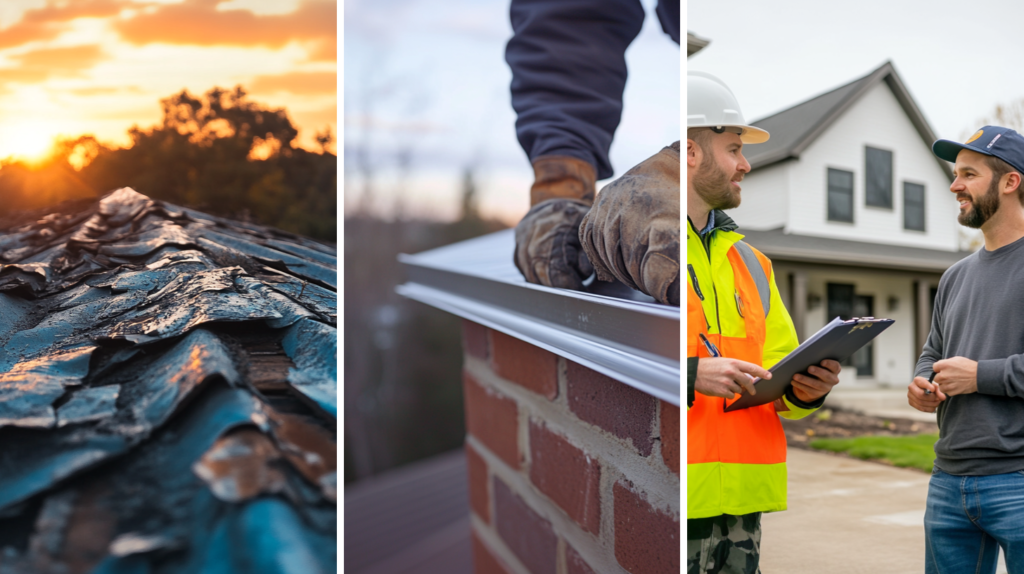
Roofing installation is crucial for homeowners and building owners looking to enhance their property's appearance and durability. With the expertise and services provided by professional roofing contractors, this installation process becomes seamless and efficient. By understanding the steps involved in roofing installation, clients can gain insight into its benefits and advantages, ultimately making informed decisions for their homes or buildings. Initial Consultation and Assessment The initial consultation and assessment process is essential in installing roofing services. This process begins with an in-home consultation, where experts gather important information to determine the best course of action for the homeowner or building owner. During the consultation, the team conducts a thorough assessment to evaluate the roof's current condition and identify potential issues. This assessment involves a comprehensive roof inspection, examining its structure, ventilation, and overall condition. The team can carefully analyze these factors to determine the material options that best suit the client's needs. The consultation discusses various factors, including the homeowner or building owner's budget, specific requirements, and preferences. This allows the team to understand the client's vision and tailor the installation process accordingly. Additionally, sample preferences are considered during the consultation, as homeowners may have specific materials or designs in mind. By thoroughly conducting an initial consultation and assessment, the roofing contractor ensures that the installation process is well-planned and executed efficiently. This approach allows them to provide the best roofing solution for each client, ensuring their satisfaction and the longevity of their roof. Roof Material Selection When it comes to roof installation, selecting the suitable materials is crucial. One aspect to consider is the underlayment options. This layer is a moisture barrier and helps protect the roof from leaks. Popular choices include synthetic underlayment and traditional felt underlayment. Synthetic underlayment offers better resistance to water and provides enhanced longevity. Another important aspect is the shingle installation process. Various types of shingles, such as asphalt, metal, and tile, are available. Each has advantages, such as durability, energy efficiency, and aesthetic appeal. Discussing the options available for shingle materials with the roofing contractor during the quoting process is essential. Selecting suitable materials is vital to ensuring the longevity and quality of the roof. It is important to take the time to discuss and understand the options with the contractor during the quoting process. This allows homeowners and building owners to make an informed decision based on their needs and preferences. With the various underlayment and shingle options available, the installation process can be tailored to suit the specific requirements of each project. So, before embarking on a roofing installation, discuss all available options with your contractor. Installation Timeline and Steps Installing a new roof is an important investment for any homeowner or building owner. A detailed timeline and specific installation steps must be followed to ensure a successful and watertight installation. Here is a chronological guide to the roof installation process. Pre-installation Preparation: The first step involves assessing the current roof condition and preparing the site. Any existing roof materials are removed, and the surface is thoroughly cleaned and inspected for potential issues, including starter strip evaluation. Installation of Underlayment: The underlayment, a critical layer that provides additional protection against water infiltration, is rolled out and properly fastened to the roof deck. This ensures a secure base for the roofing system and secures nail heads for durability. Flashing Installation: While existing step flashing and dormer flashing can often be reused, it is essential to examine their condition carefully. Any damaged or deteriorated flashing should be replaced to guarantee a watertight seal. New step flashing and dormer flashing are installed strategically around roof intersections and openings to prevent water penetration. Roofing Material Application: The next step involves the careful application of the chosen roofing material, whether it is shingles, tiles, or metal panels. Each piece is expertly placed and secured, ensuring proper alignment and a visually appealing result. Ridge Vent Installation: Installing a ridge vent allows for proper ventilation, helping to reduce heat buildup and moisture accumulation in the attic. This step contributes to prolonging the roof's lifespan. Final Inspection and Cleanup: Once the installation is complete, a final inspection ensures everything is correctly installed and meets quality standards. Any debris or waste materials are removed from the site, leaving the customer with a clean and satisfied finish. Following this timeline and specific installation steps, including assessing existing flashing, installing new flashing, and achieving a watertight seal, the roofing contractor guarantees a reliable and long-lasting roofing solution for homeowners and building owners. Learn more about installation and the roofing services we offer: skyroofingconstructiontx.com/installation/ https://flic.kr/p/2q3Lc6q

No comments:
Post a Comment